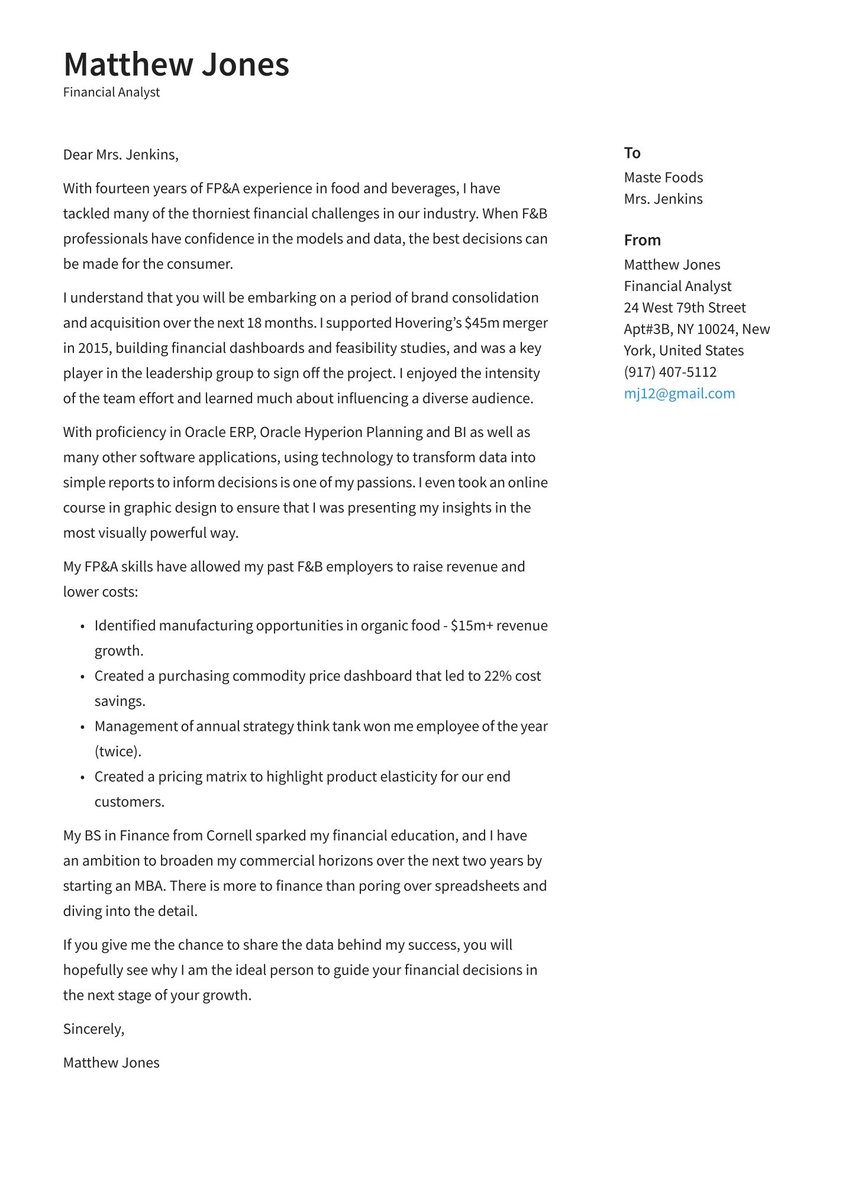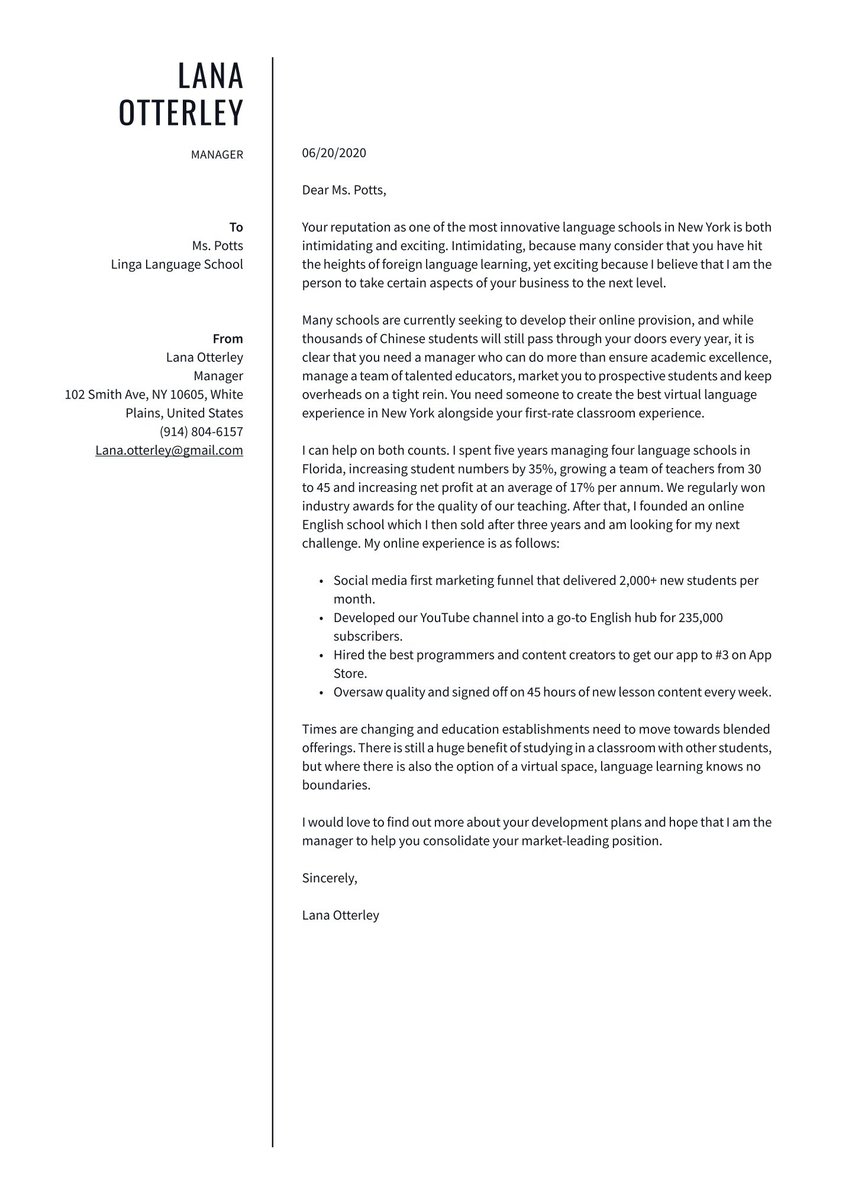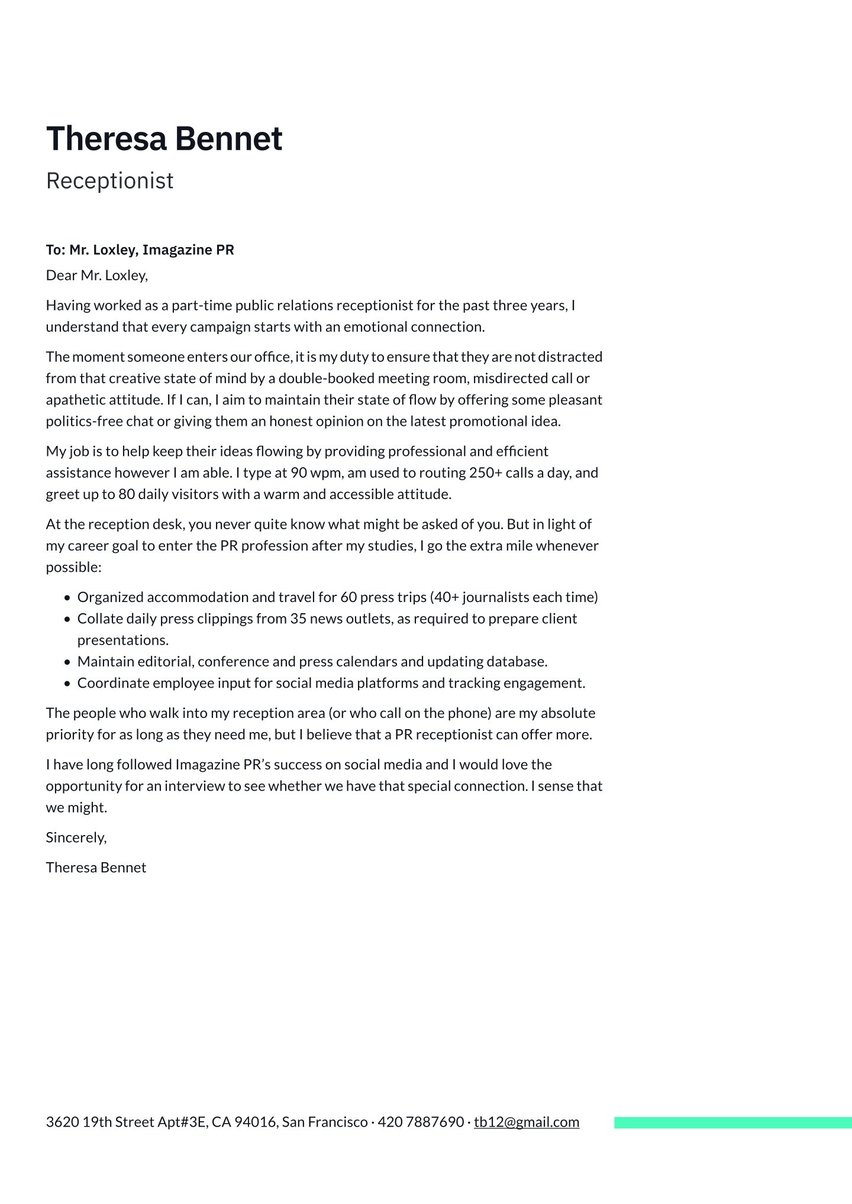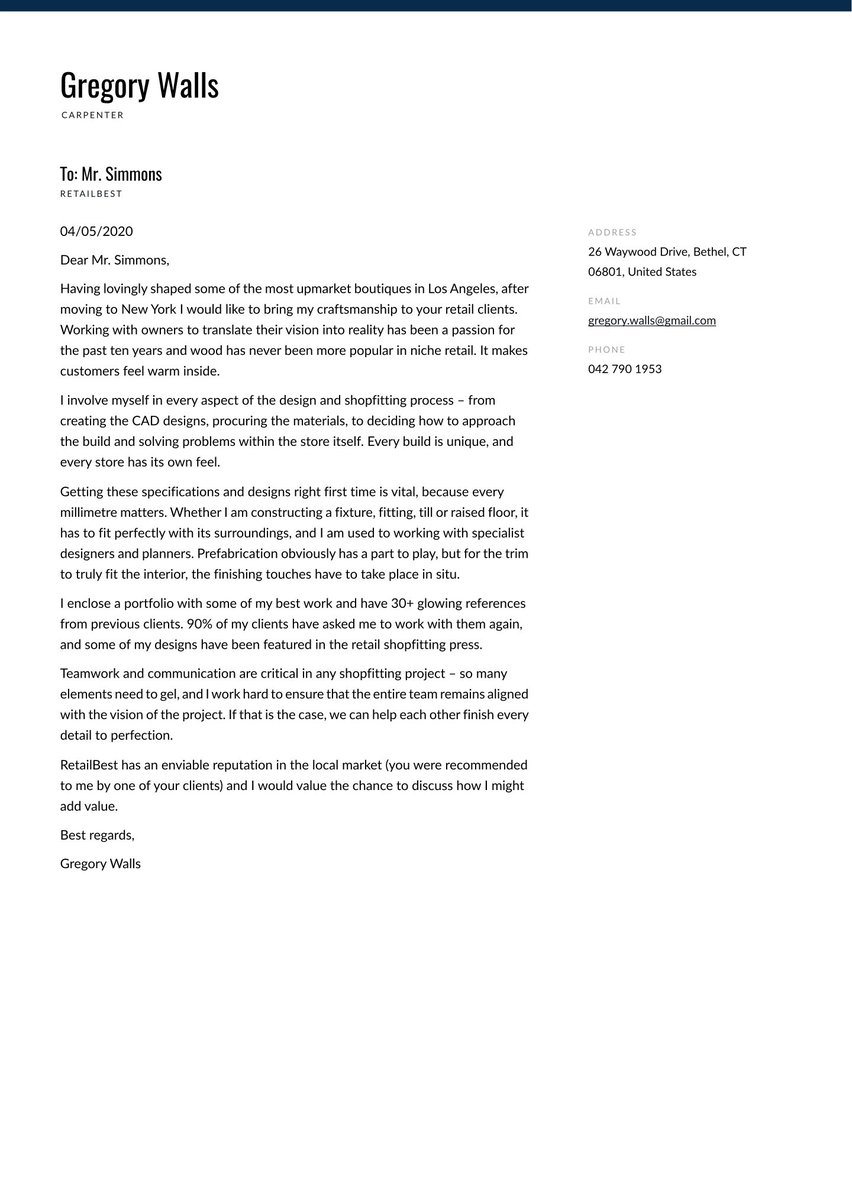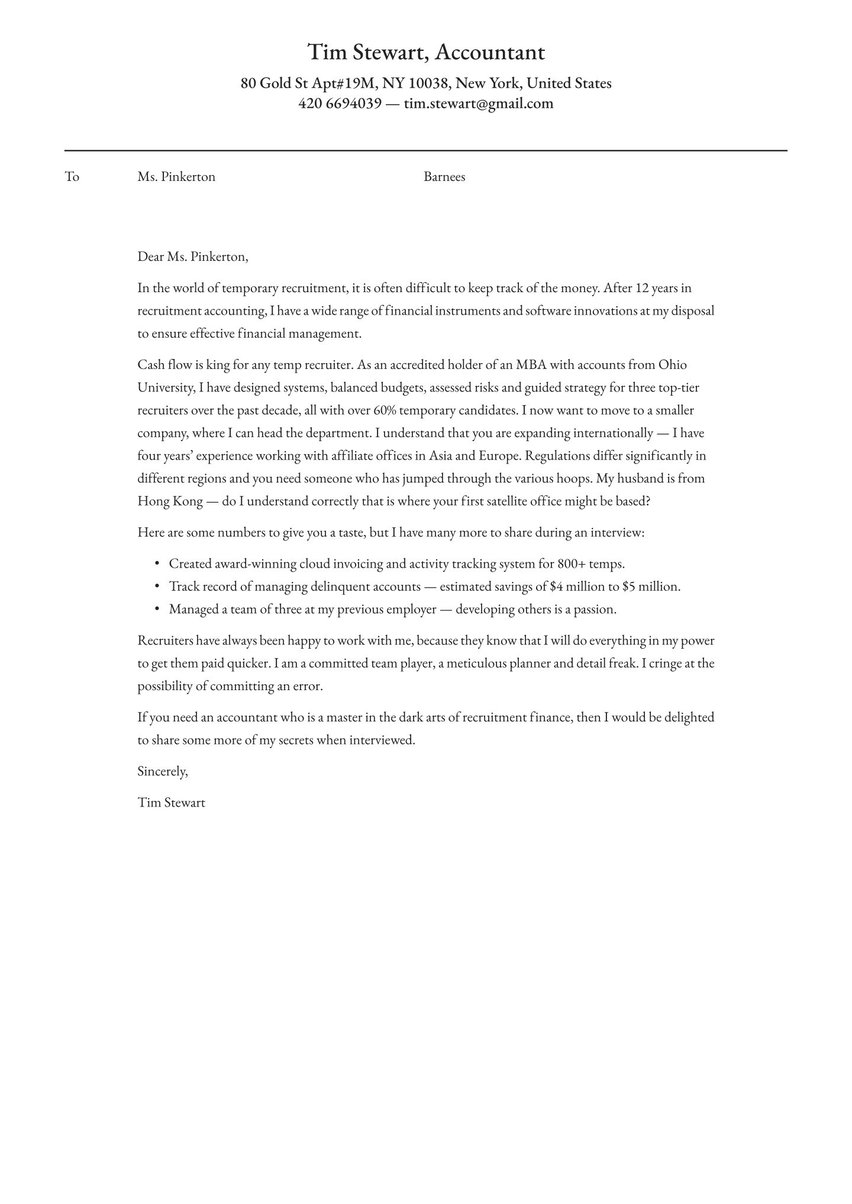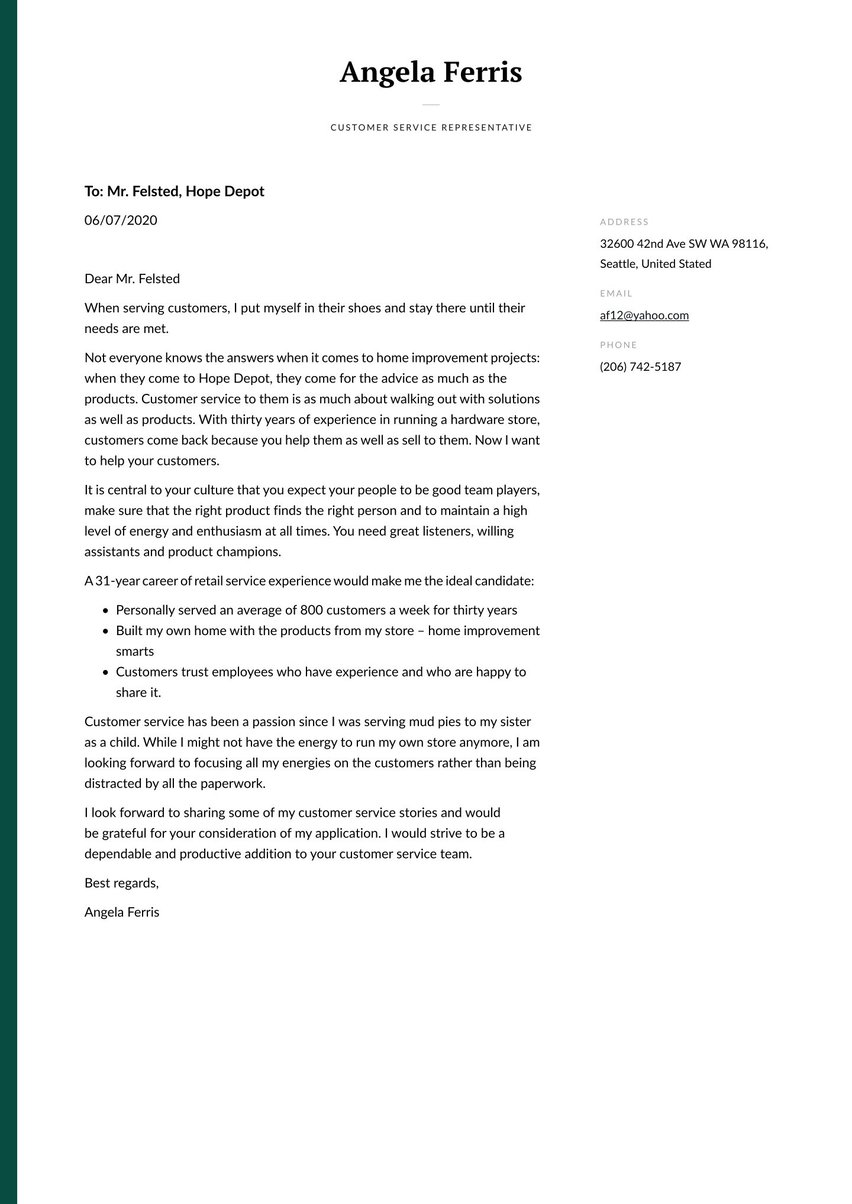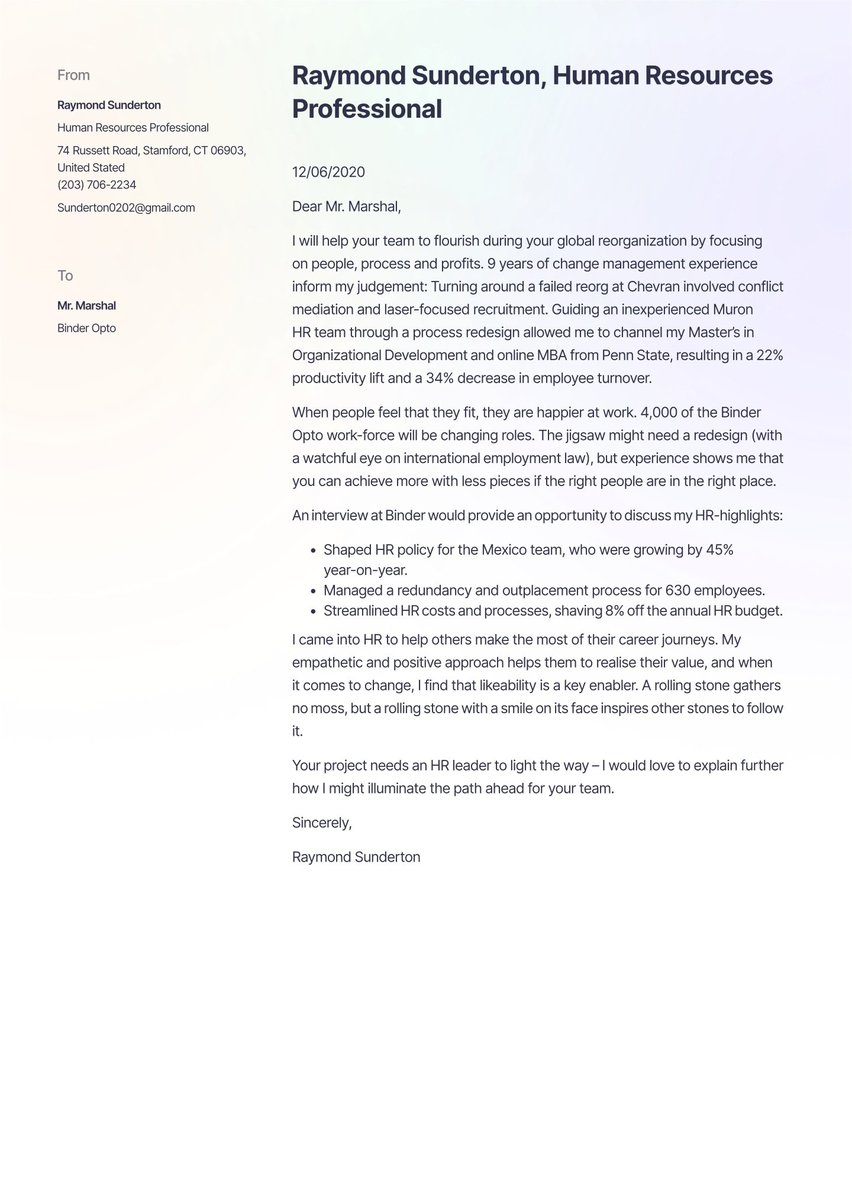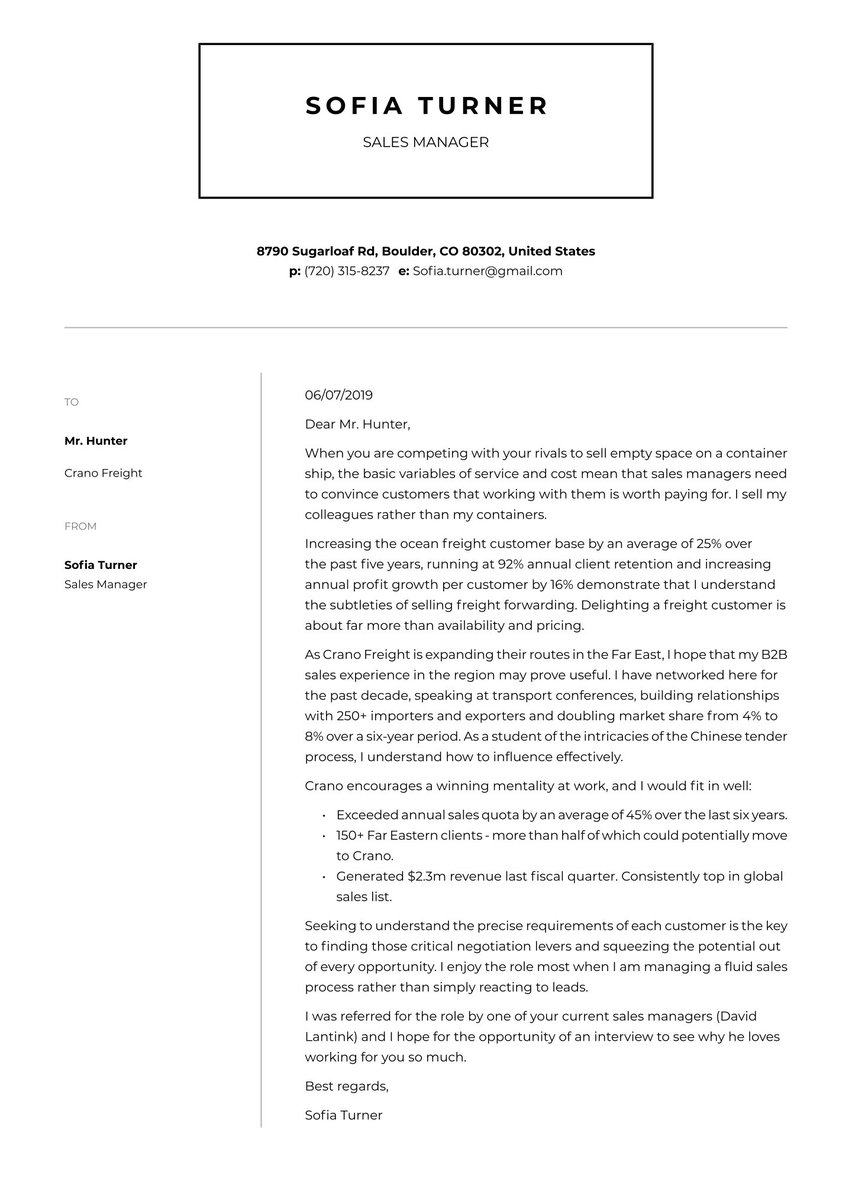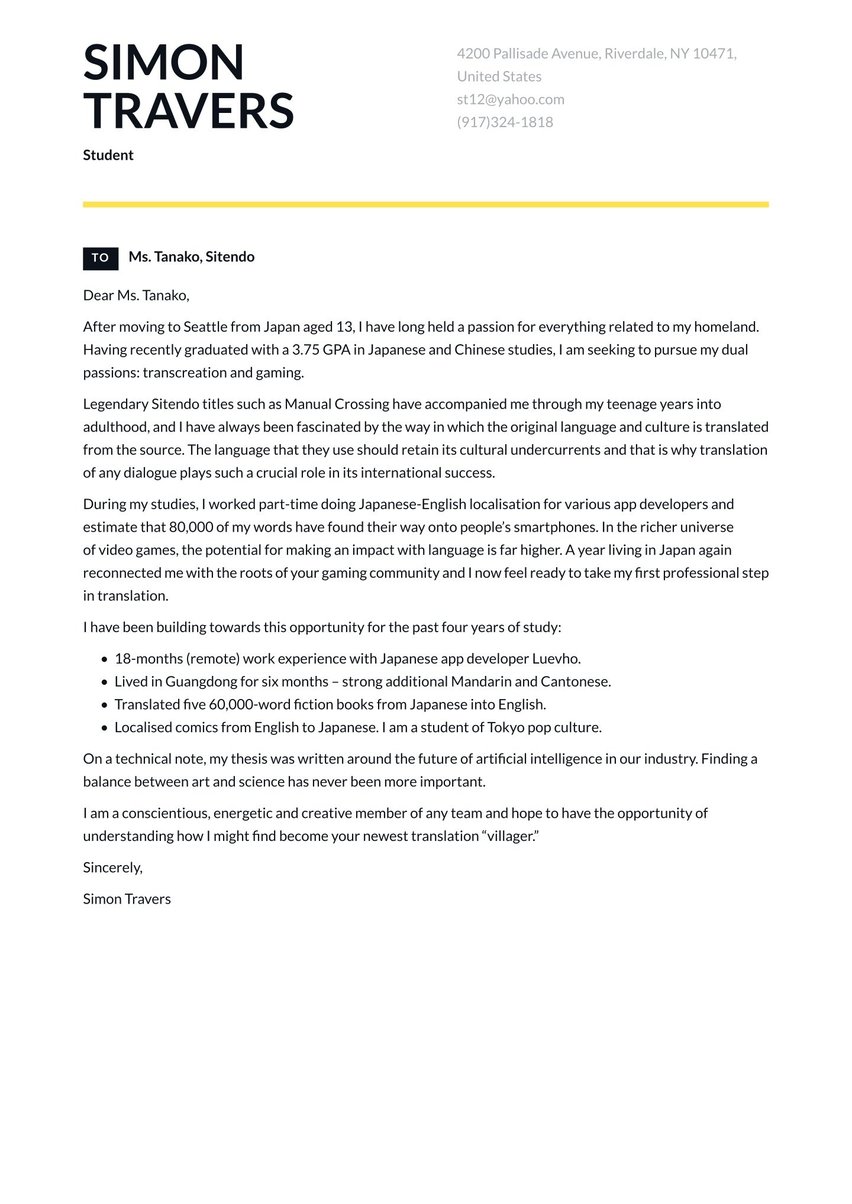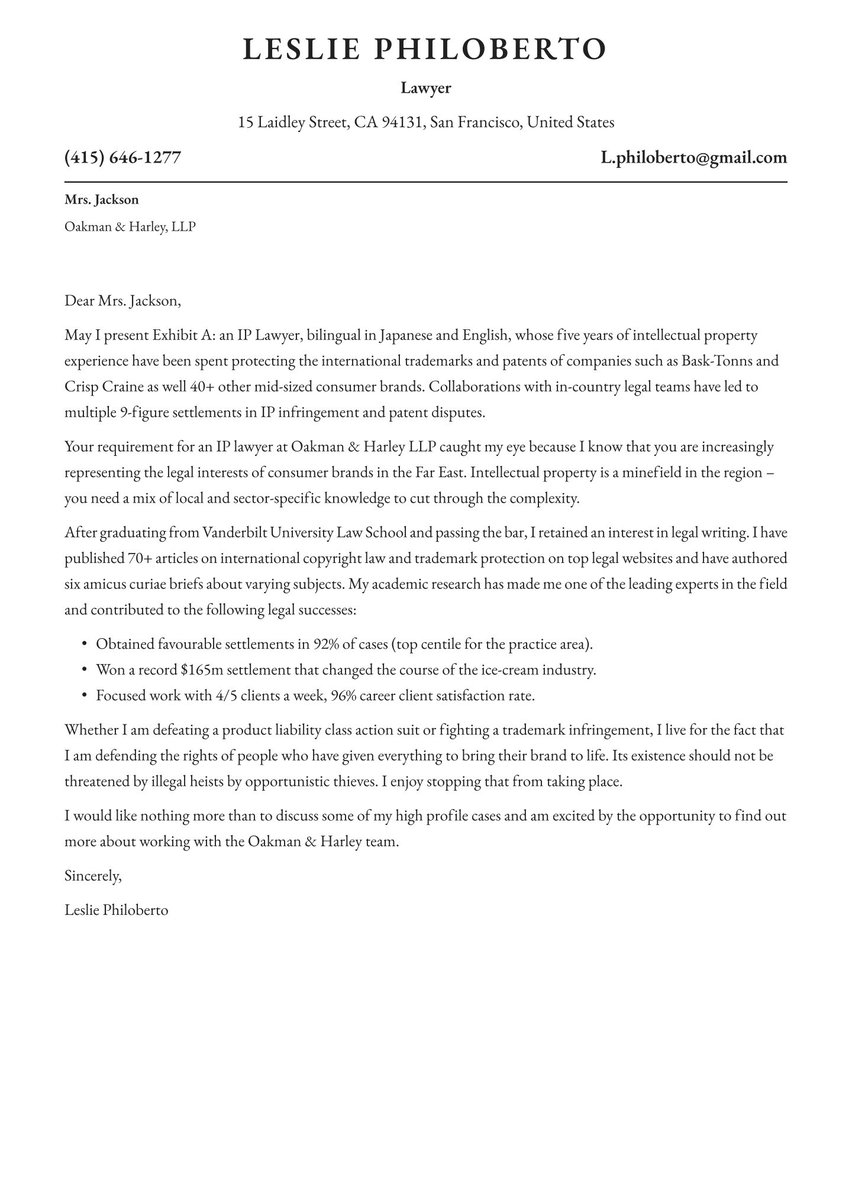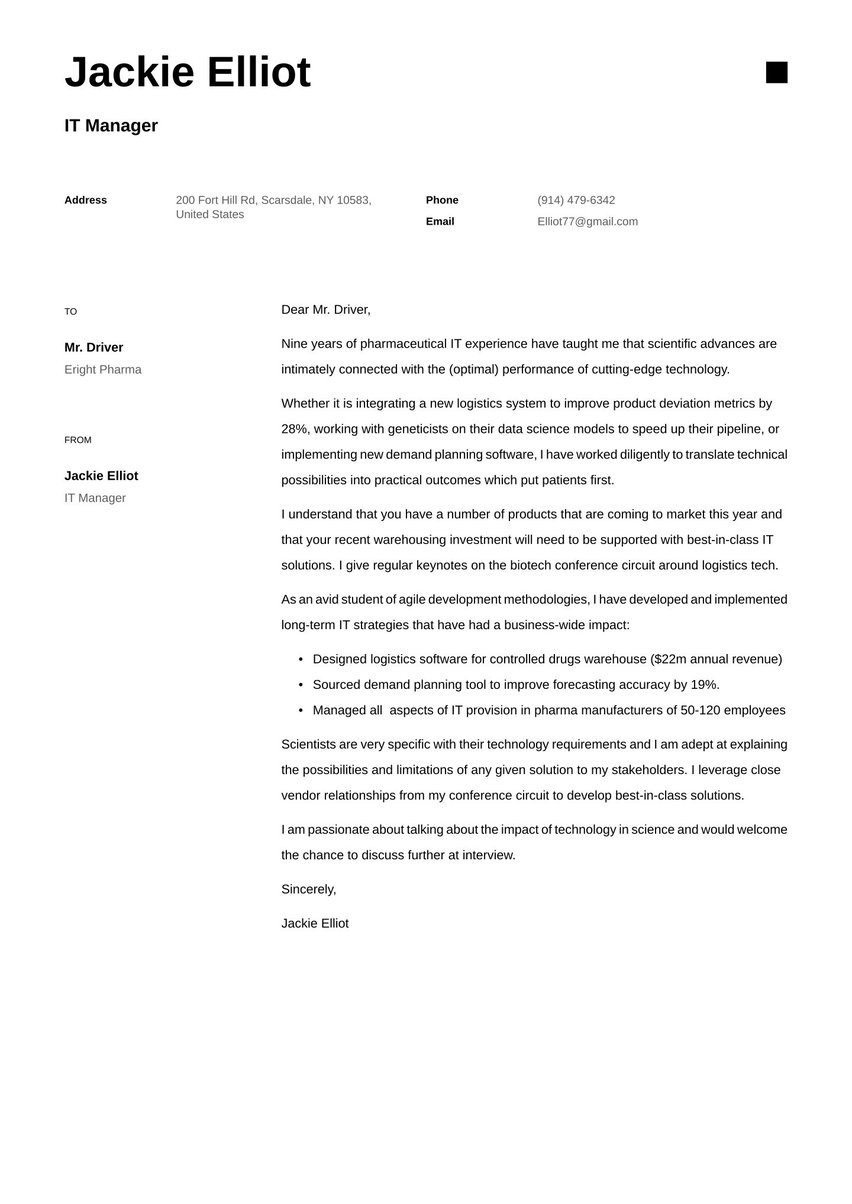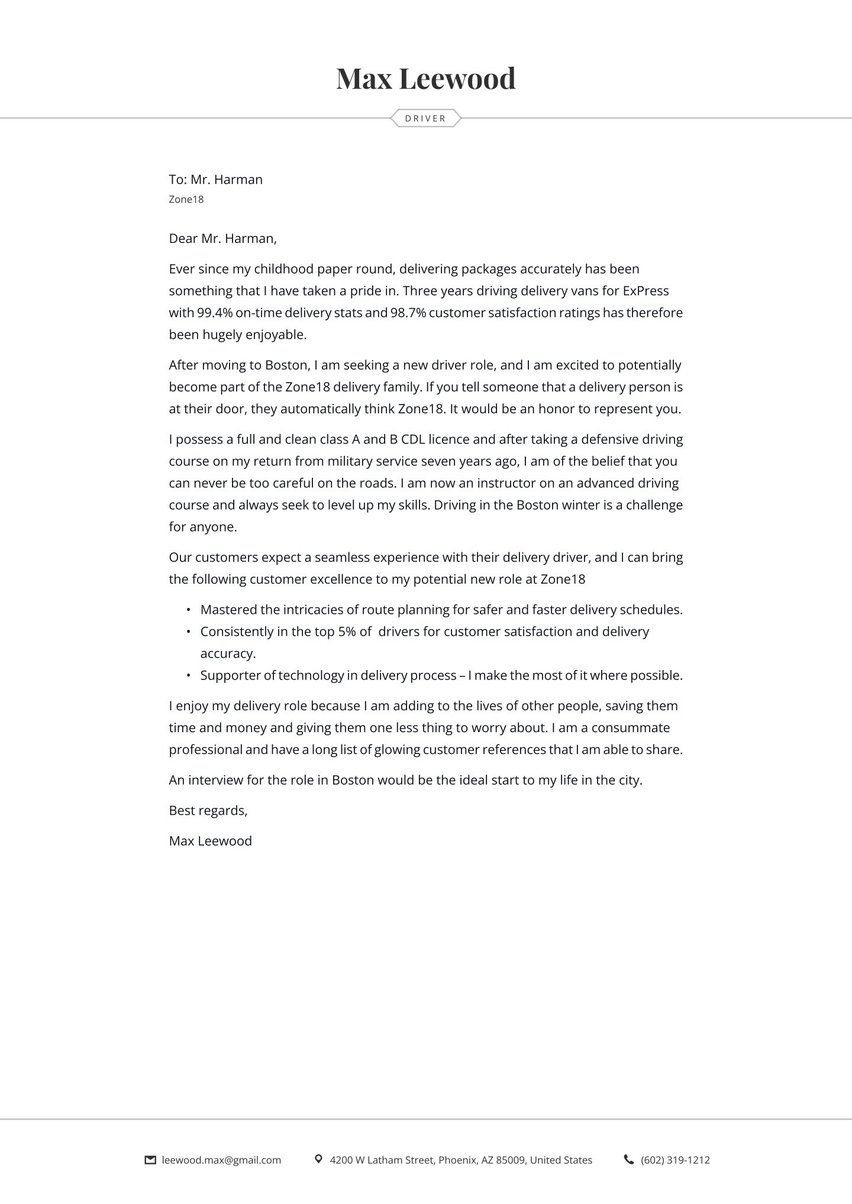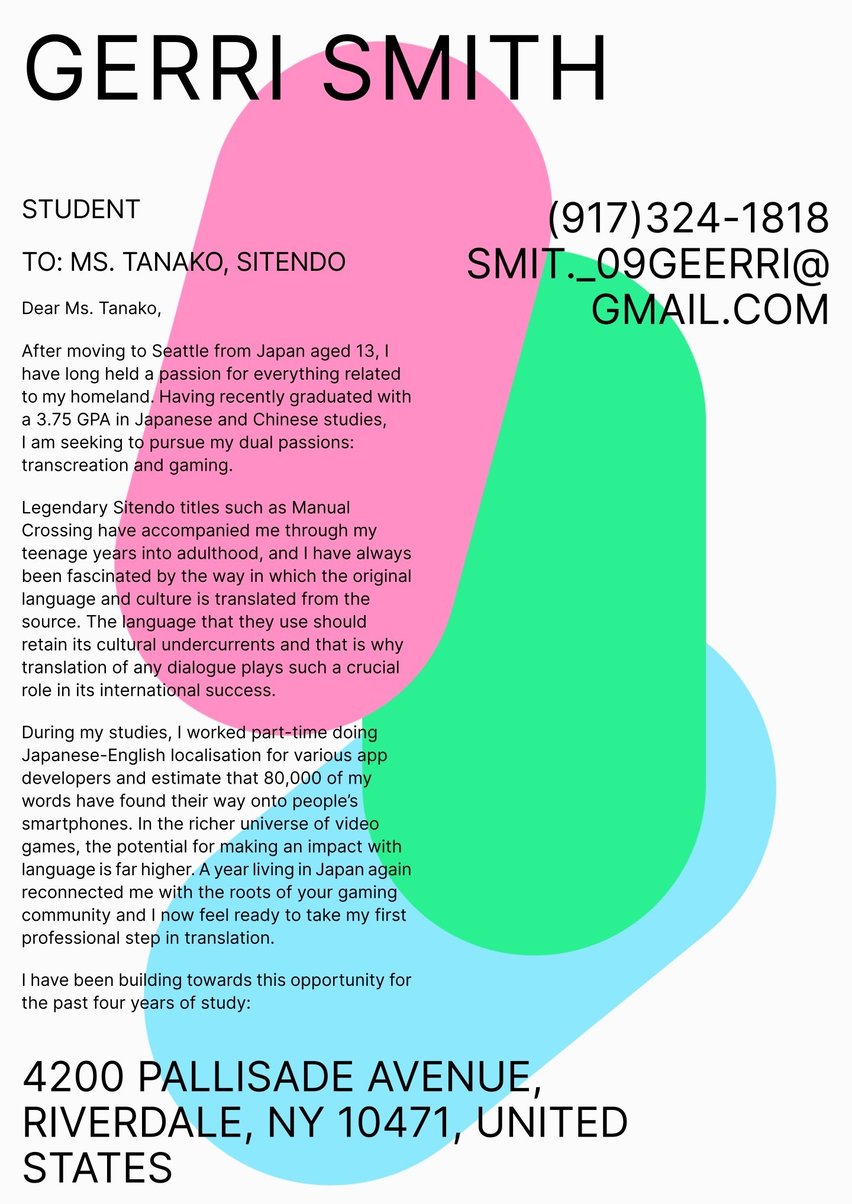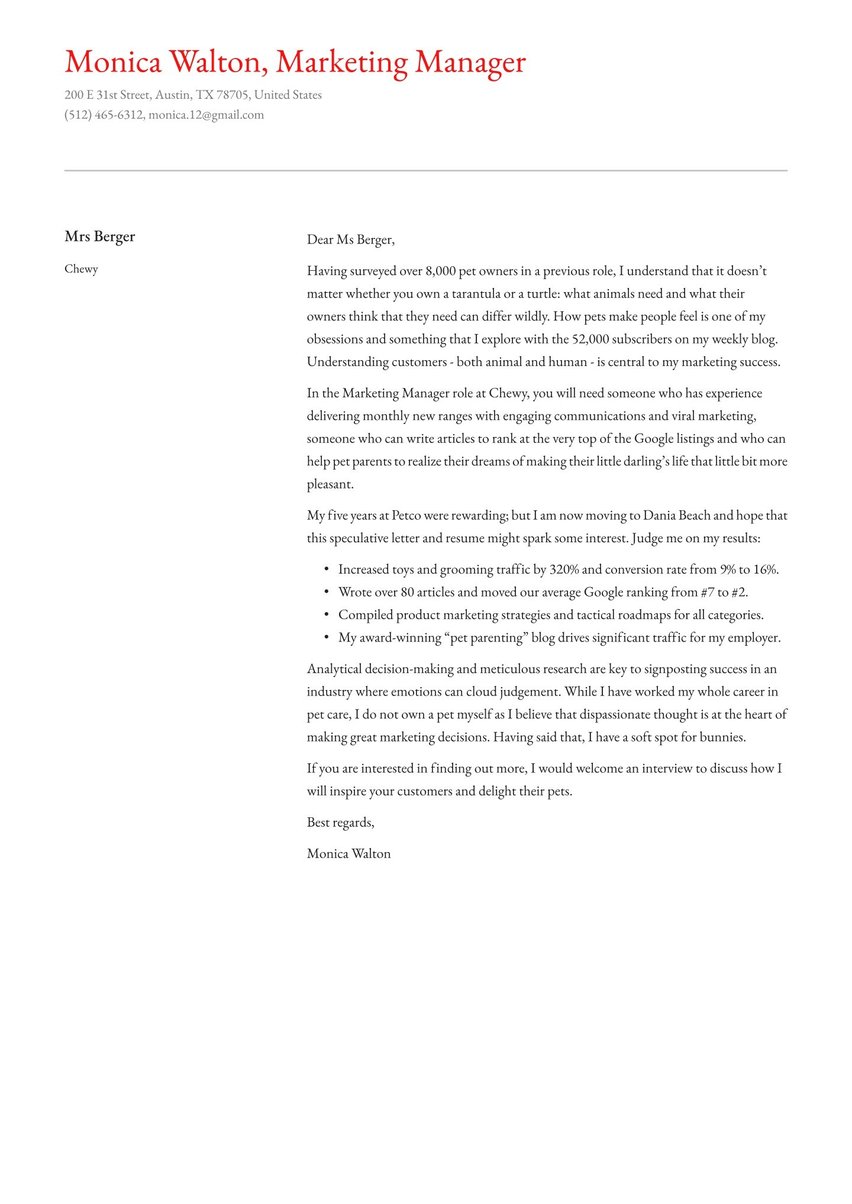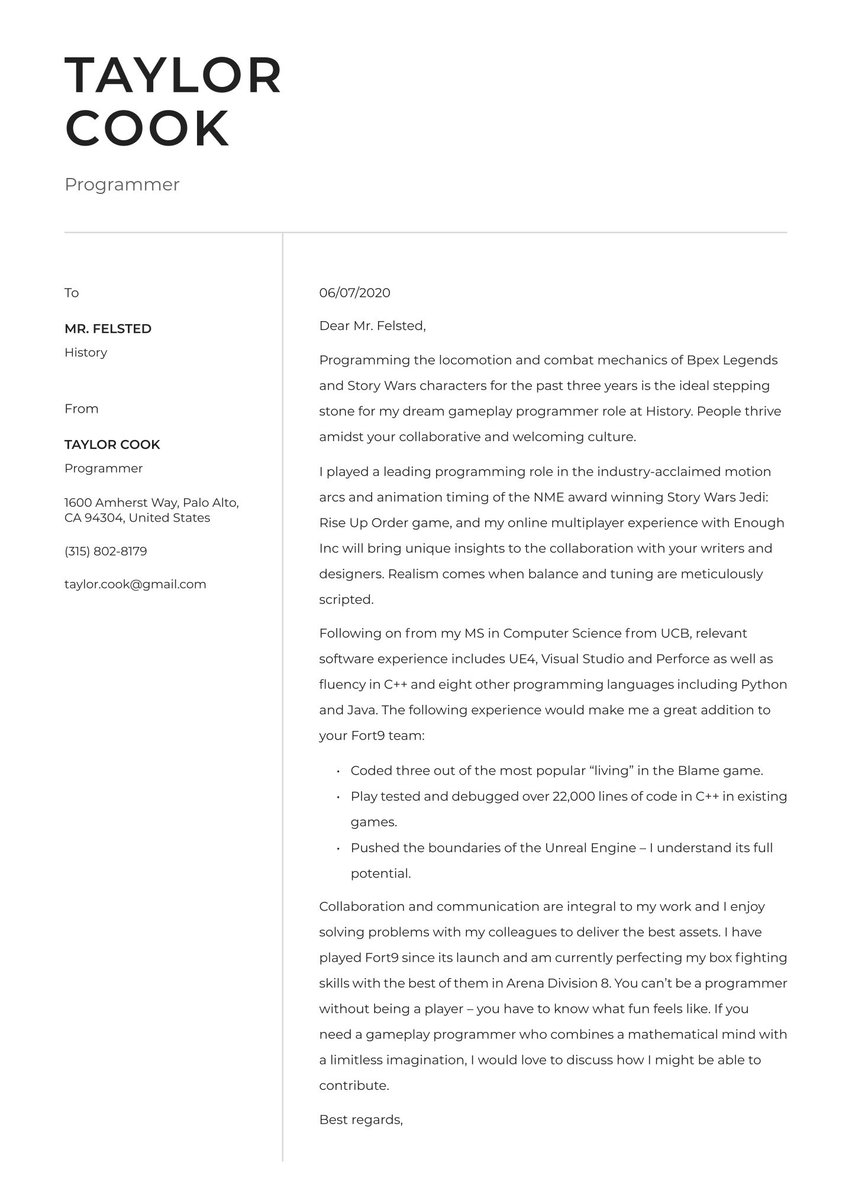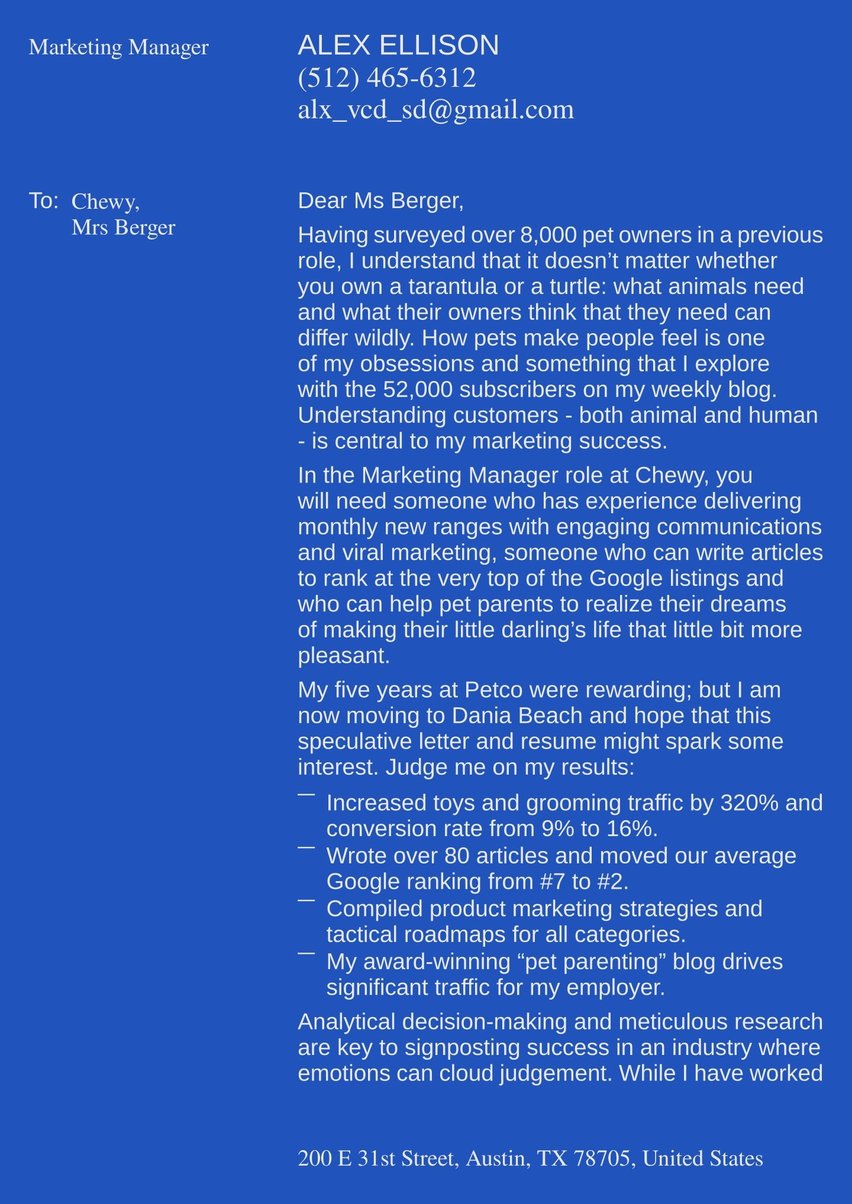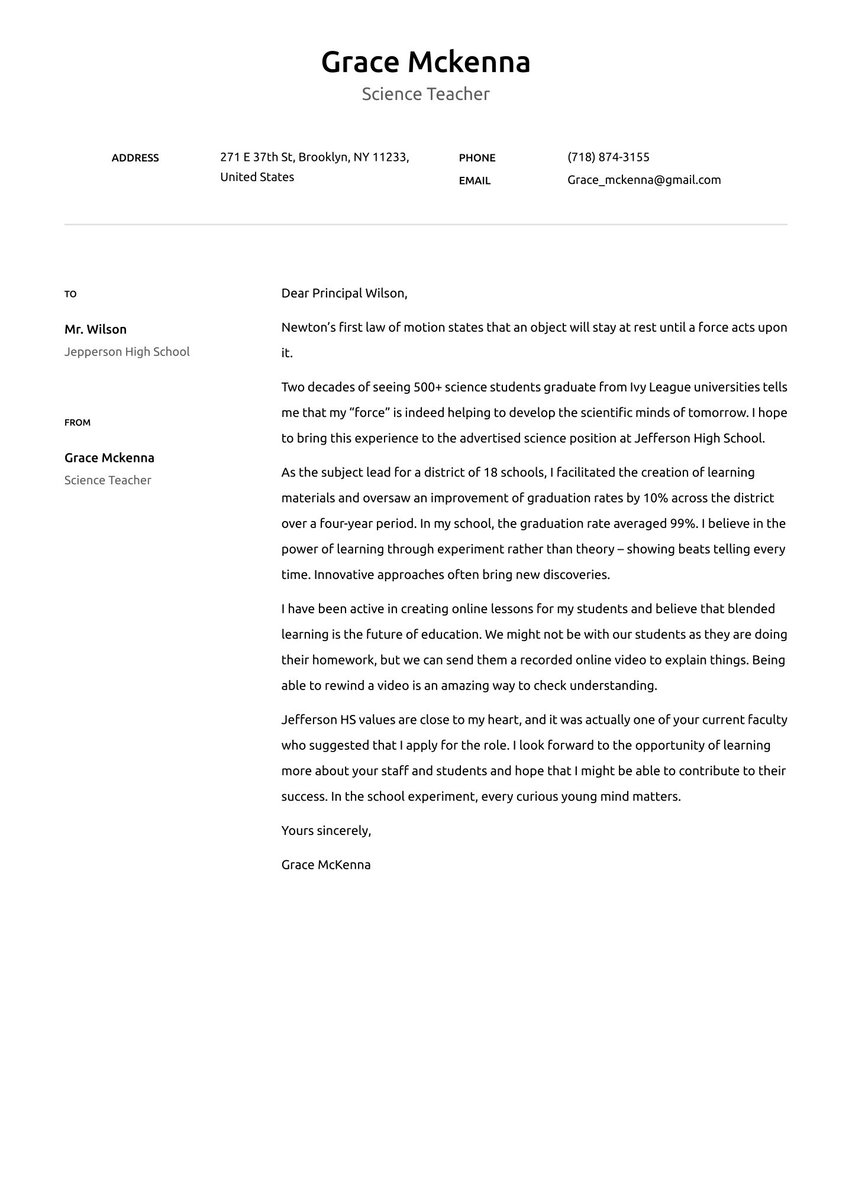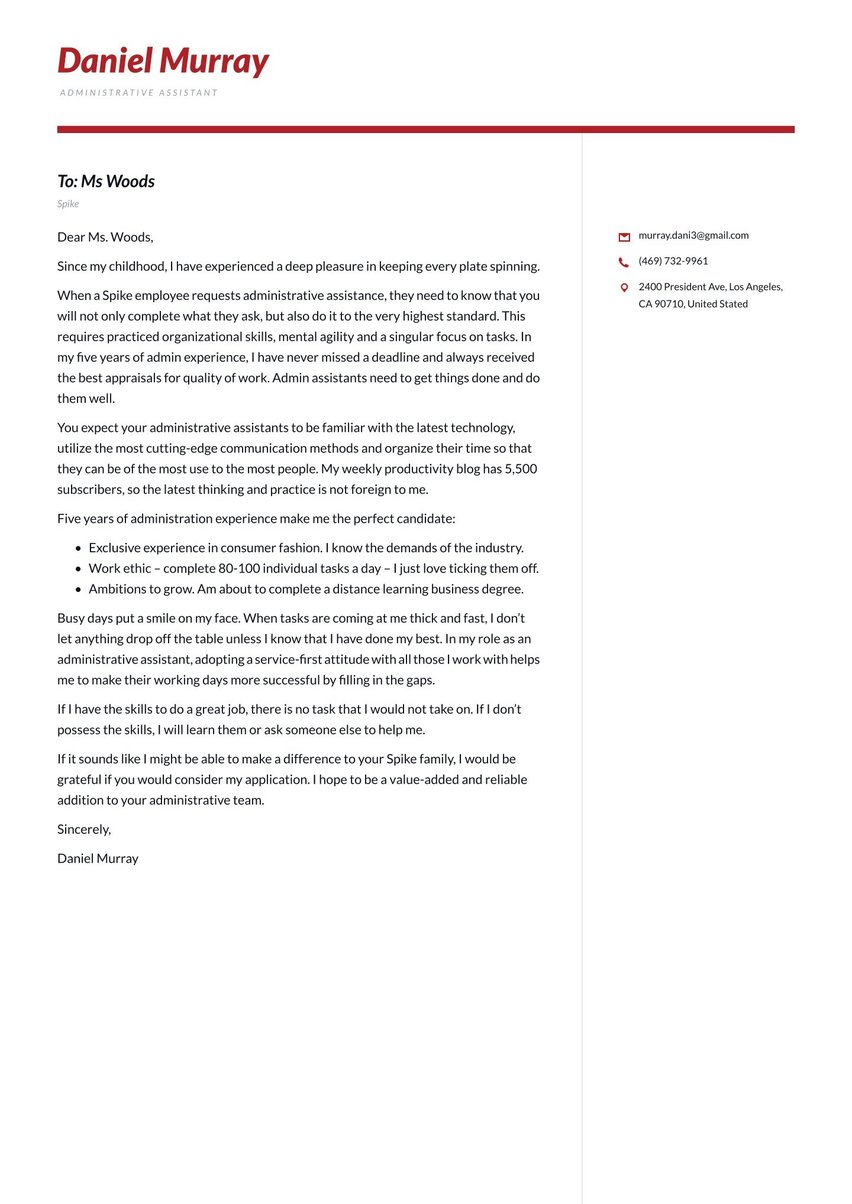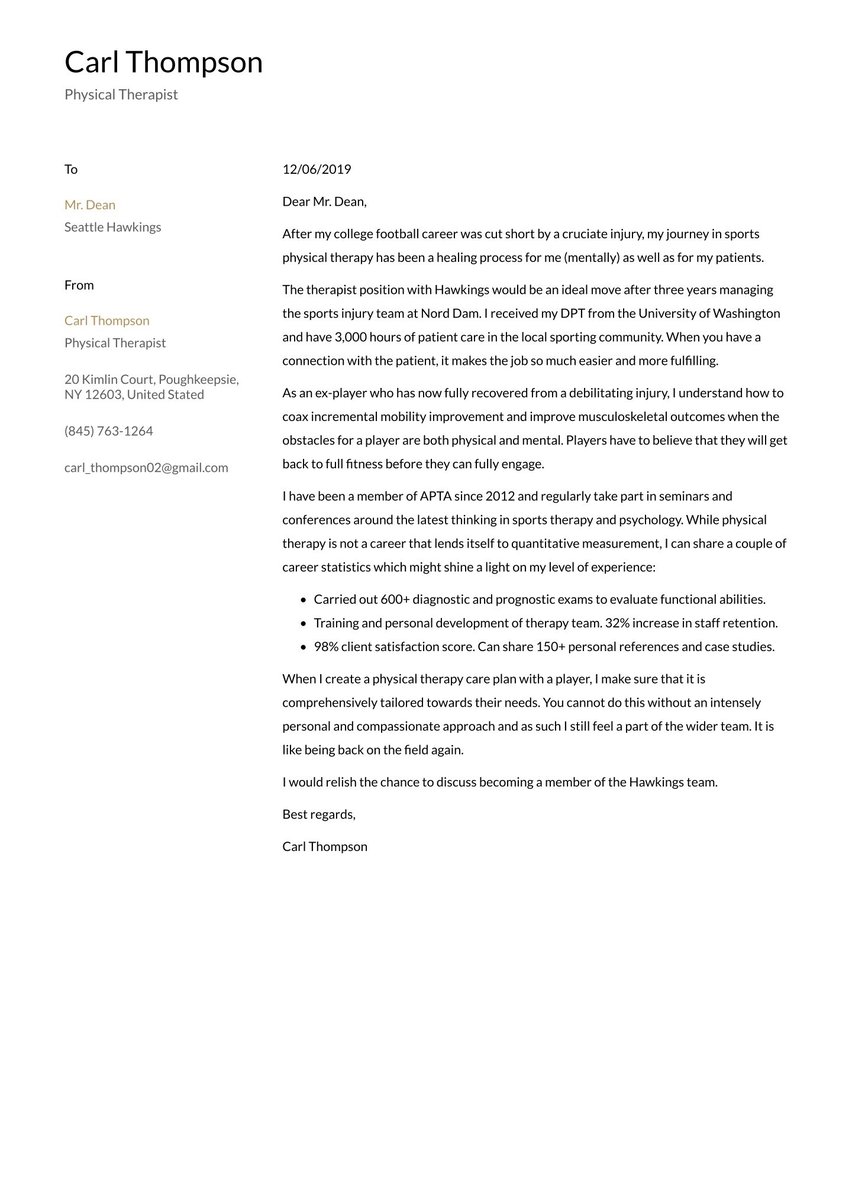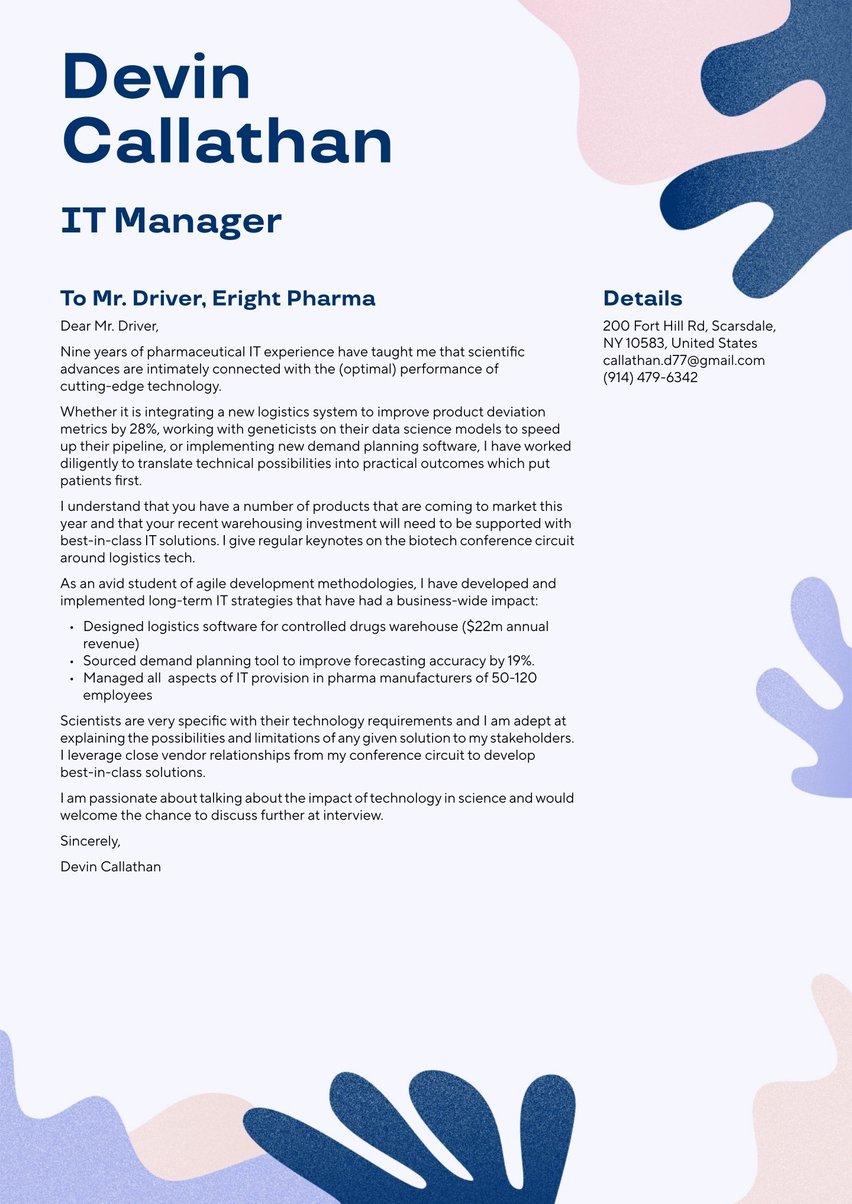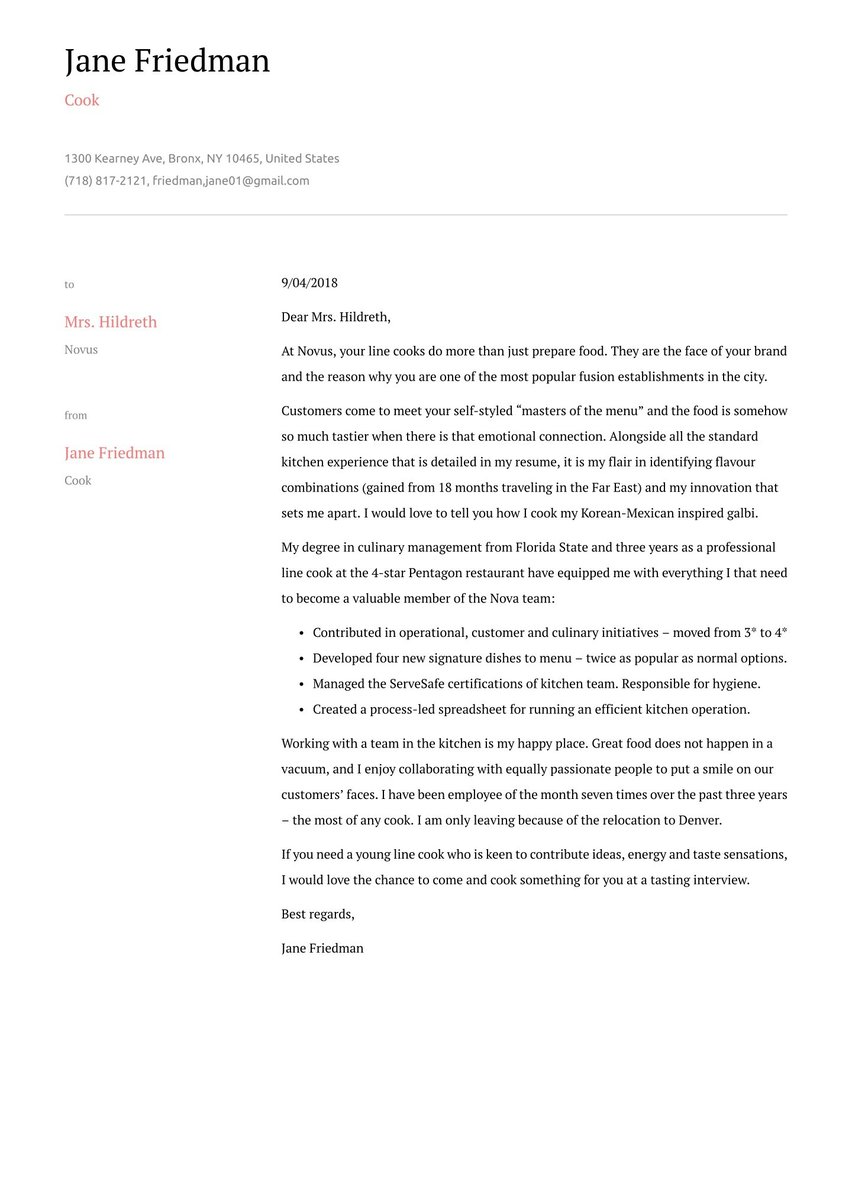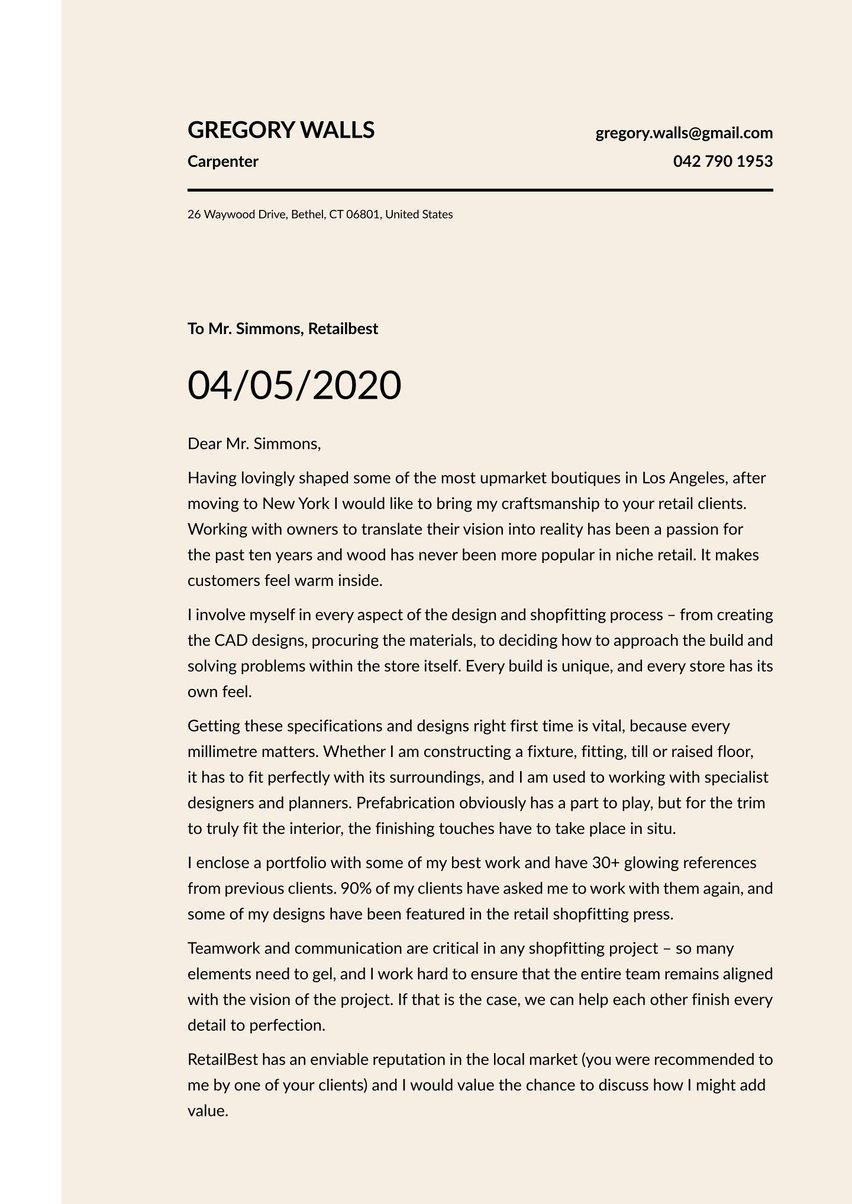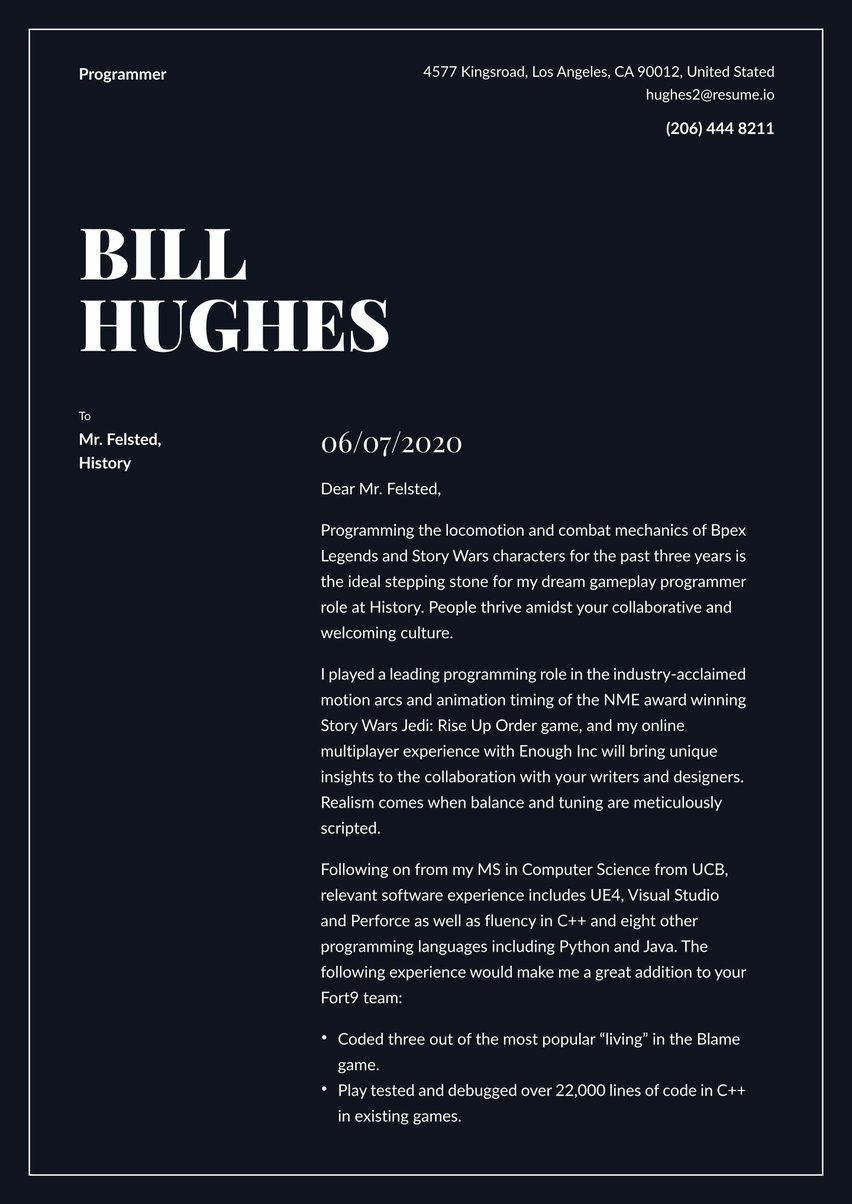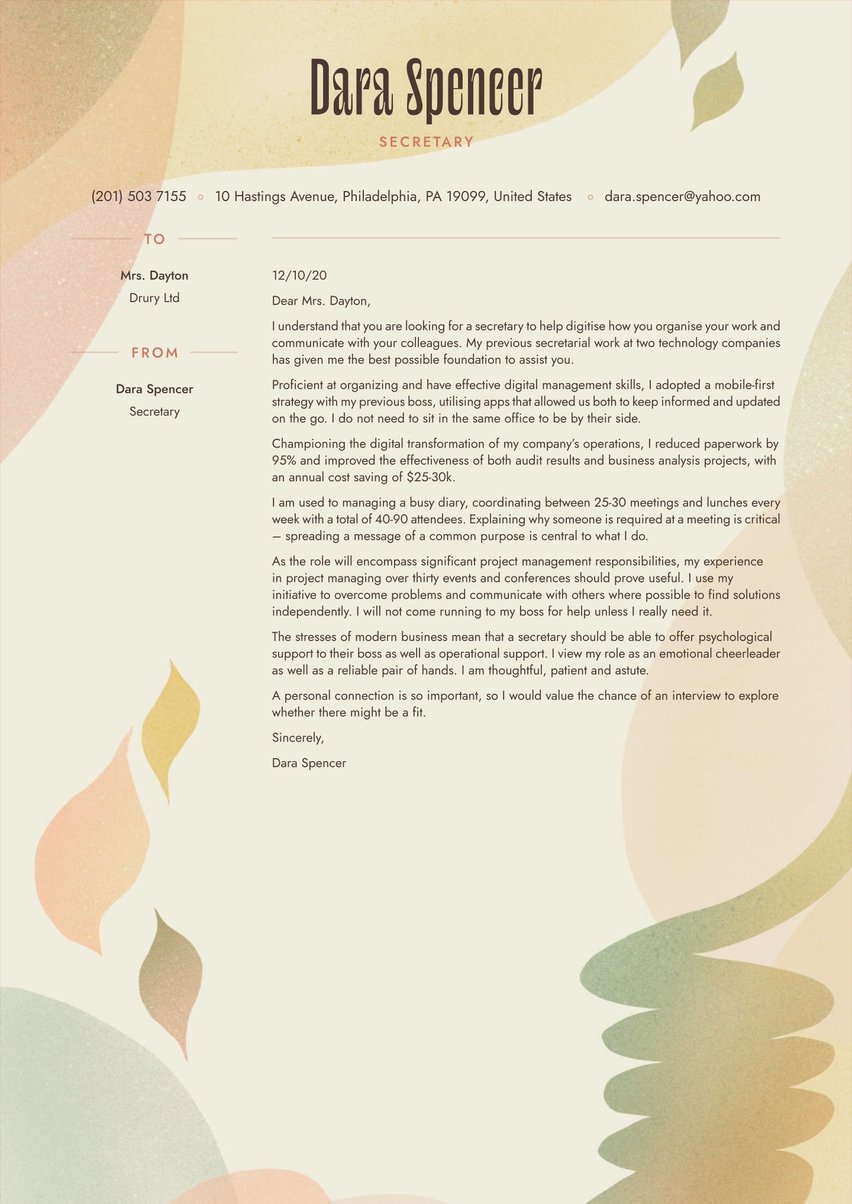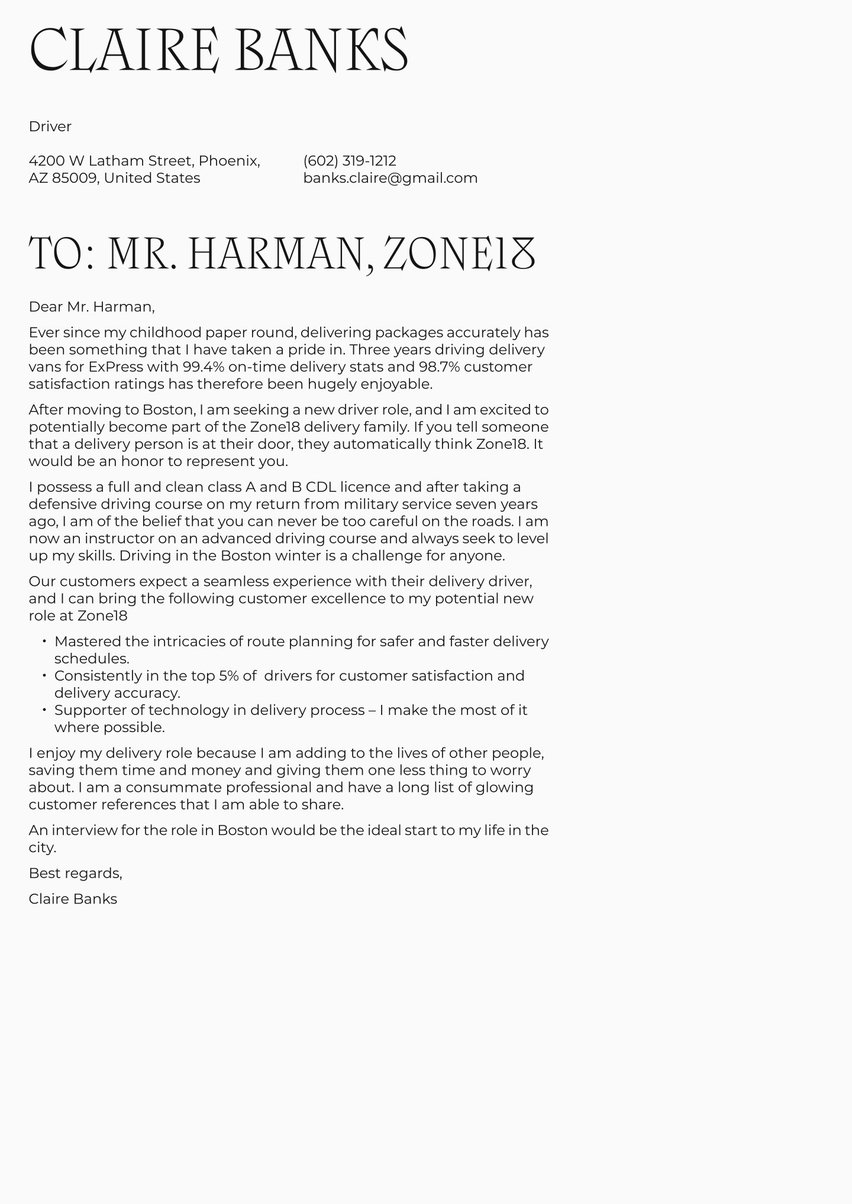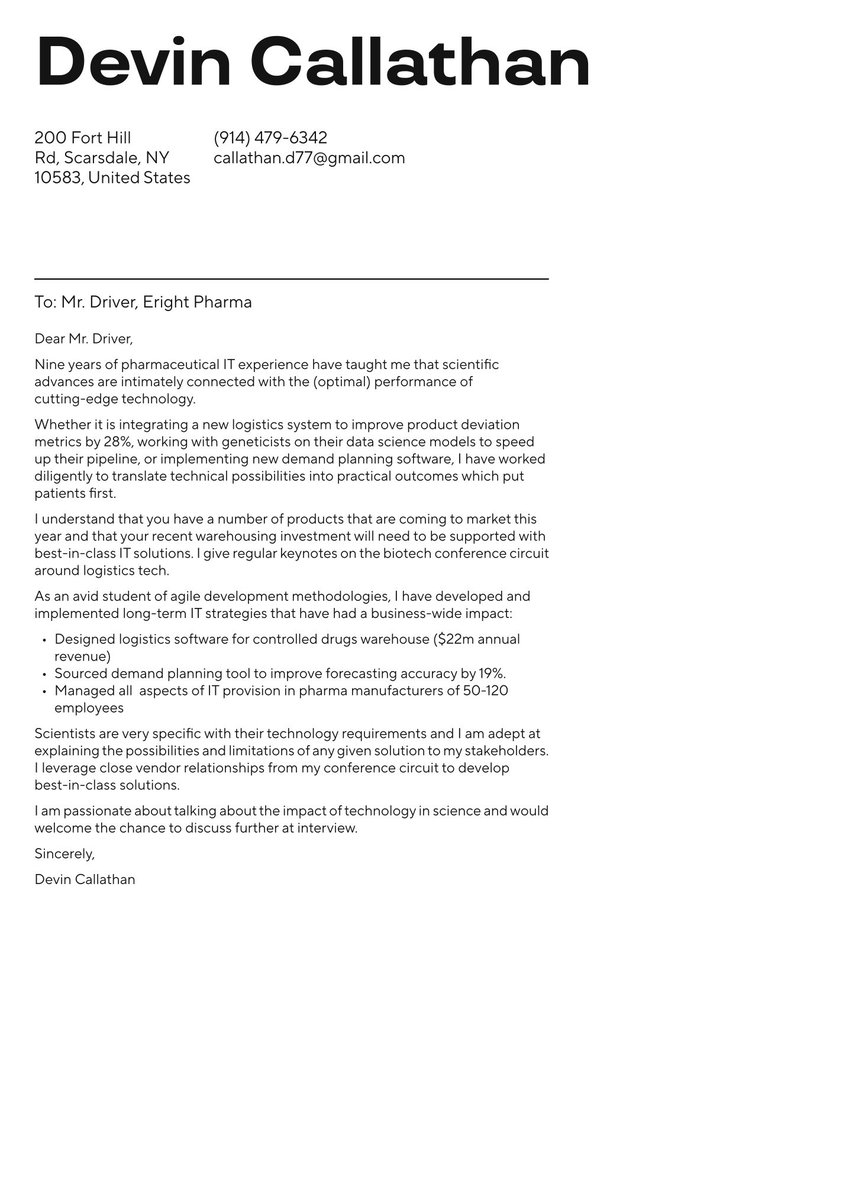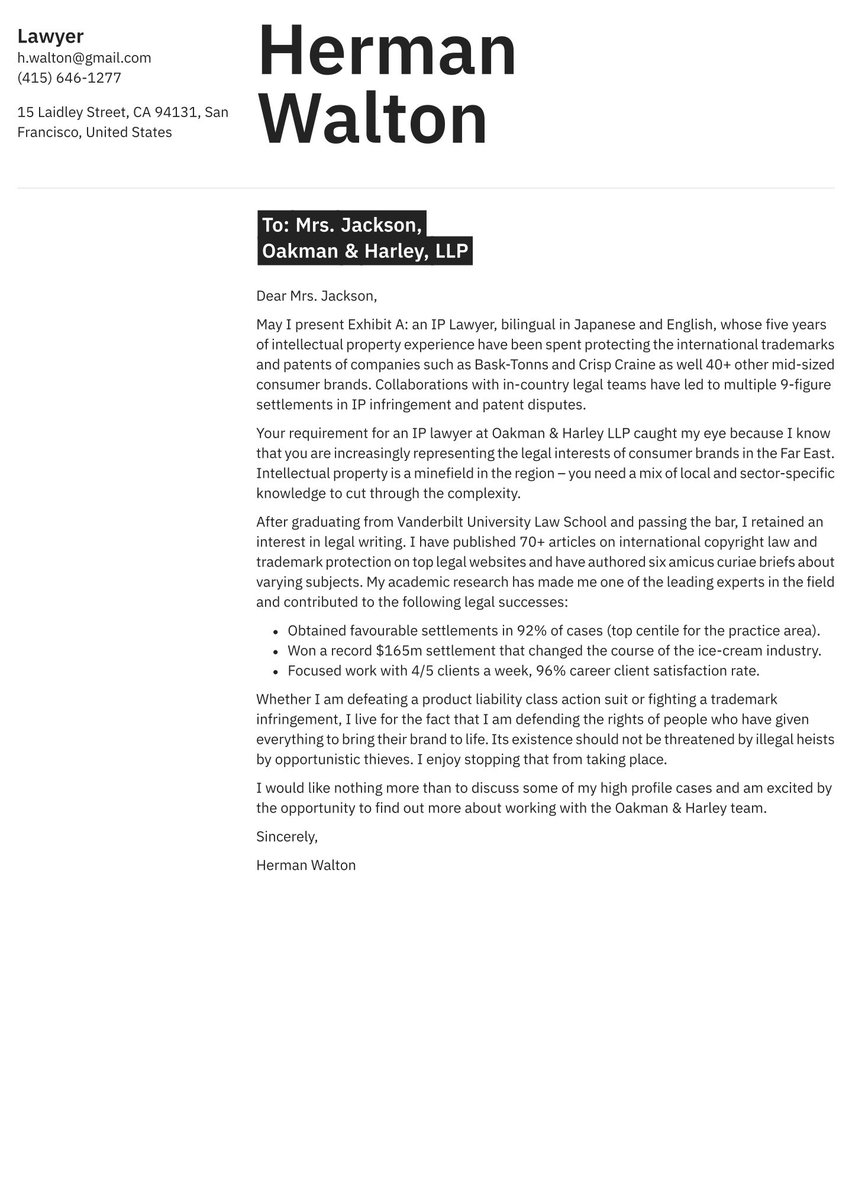Every milestone in the history of human resources management could be said to bear the stamp of administrative officers in some shape or form. More than ever, it remains a dynamic career full of new opportunities for challenge-seekers. When your next desired job move arises, the importance of submitting an excellent administrative officer cover letter cannot be overstated.
Positions as administrative officers, also known as office administrators, can offer great pay, daytime hours and the chance to work in collaboration with just about every employee in the office – all without needing an advanced degree.
Does this sound like the perfect job for your organizational and administrative abilities? In order to convince a hiring manager that you’ve got the right skills and attitude, you’ll need a great cover letter. With Resume.io’s tools and cover letter examples and templates, including this office administrator cover letter example, you’ll quickly learn how to write a cover letter that lands you the perfect position.
This writing guide, incorporating an administrative officer cover letter sample, looks at the following aspects:
- The modern role of an administrative officer
- Why a cover letter is essential
- The best format to structure a cover letter and components it should include
- How to maximize the impact of each cover letter part: header, greeting, introduction, body and conclusion
- Writing an office administrator cover letter with no experience
What does an administrative officer do?
Traditionally, all manner of workplaces and workforces have relied on diversely competent staff with extraordinary multitasking skills to keep offices running smoothly and efficiently. More than ever nowadays, the functional scope of an administrative officer’s position varies widely, depending on the size of employer’s organization, the department and the industry.
Administrative officer job candidates are typically expected to have business management experience and strong industry knowledge to assist with marketing and business development goals.
Businesses, governments and nonprofit agencies are constantly reshaping and retooling their operations to keep pace with shifting economic dynamics. Multitasking requirements in the digital age have taken on wider, deeper and more complex dimensions, from website management and accounting functions to sales and marketing support.
Regarding the impact of e-technology, based on 2019 Canadian research findings, Express Employment Professionals concluded that “administrative professionals have felt some of the most disruptive changes of any profession.”
A Manpower survey of administrative professionals indicates their top three favorite job aspects:
- Keeping everything organized and running smoothly — 41%
- Performing a variety of tasks throughout the day — 35%
- Being the primary resource for answers on a variety of topics
The top five most challenging duties are:
- Metrics/ statistical reporting or assembly
- Multitasking
- Presentation storytelling and development
- Accounting / budget management
We invite you to browse through these related cover letter writing guides and examples in our administrative category for more inspiration.
- Customer Service Representative cover letter sample
- Administrative Assistant cover letter sample
- Receptionist cover letter sample
- Office Administrator cover letter sample
- Office Assistant cover letter sample
- Office Manager cover letter sample
- Personal Assistant cover letter sample
- Secretary cover letter sample
- Call Center cover letter sample
- Administrative cover letter sample
- Front Desk Receptionist cover letter sample
- Virtual Assistant cover letter sample
Why you need a cover letter
Administrative officers have a lot to prove in the course of a normal workday, which also needs to come across when competing for a new job against other qualified applicants. A well-crafted cover letter can tell your unique story in a way that a relatively impersonal resume cannot.
What all administrative professionals in the 21st century have in common, according to an extensive Manpower study, is the expectation of being “much more than the right-hand person to the executive.”
While clerical and organizational management proficiencies remain vitally important, administrative officers must continue demonstrating their value as proactive problem-solvers, collaborative decision-makers and versatile team contributors with superior interpersonal skills.
Research shows that HR professionals find cover letters important and useful to:
- Explain a job candidate’s motivation to join the company
- Describe career objectives
- Explain the reasons for changing careers
- Explain employment gaps
- Highlight professional achievementsResearch shows that HR professionals find cover letters important and useful to:
Best format for an administrative officer cover letter
Compared to a resume, your administrative officer cover letter is a free-form document where elements of your personality can shine through to a greater extent. Yet it still needs a clear structure of sections, each having a specific purpose that enhances your application.
All cover letters, regardless of occupation, should containing these components:
- Cover letter header
- Cover letter greeting / salutation
- Cover letter introduction
- Cover letter middle paragraphs (body
- Cover letter ending (conclusion and sign-off)
In addition, keep in mind these basic cover letter ground rules:
- Keep it your administrative officer cover letter short and snappy. That means no more than one page — 400 words maximum. Also no cheating with shrunken margins or font point sizes!
- Always customize the content, style and tone to the specific employer being addressed. A generic cookie-cutter cover letter will never do.
What if the office administrator job posting DOESN’T require a cover letter?
As you might have already noticed, online applications are great for streamlining hiring processes, but they don’t always allow candidates to ask questions or get all the information they need. This is often the case when it comes to cover letters. Sometimes a job opening will fail to mention the document entirely. So what should you do?
While it can be tempting to take the easy way out and submit your resume without a cover letter, that’s not a great strategy to actually land the position. Unless the job description or hiring manager asks you not to, we recommend writing a thoughtful cover letter for each position you apply to.
The following administrative officer cover letter example can be a basis for developing your own employer-tailored versions.
Dear Ms. Tranmer,
Having experienced how leading actors were sidelined by administrative delays and procurement problems, I well understand the pivotal role of an administrative officer in keeping the cameras rolling. Everything has to be in the right place, at the right time.
Five years of film administration experience on sets across the world has taught me the importance of planning five steps ahead. Anticipating the needs of such diverse colleagues requires a curious mind, a commercial brain and the patience of a saint. My efficiencies ensured a 15% reduction in production time, meaning that actors were out on set rather than waiting in their trailers for the latest prop.
I understand that scheduling will be a big part of the role, and I have carried out this same duty during two of my previous films. Making sure that 150 people know what they should be doing and where they need to be at any time is no simple matter. On my last appraisal, 97% of my colleagues rated my organization skills as “excellent.”
My commercial experience is also something that I bring to any set. While studying for my Business Administration bachelor’s degree, I redesigned the university’s procurement process to centralize supplier selection while broadening product choice. Getting a better deal with fewer suppliers on more products proved better than doing individual “spot buy” deals – this fascination with procurement led to a saving on 7% for equipment on my latest documentary series.
An appreciation of cultural differences is critical for any international production and having worked in over 25 countries, I understand that doing things “differently” will often work when your environment is different.
I can’t wait for a chance to understand more about your production plans and would love the opportunity of an interview to outline how my administrative leadership can make a difference – in some surprising ways.
Sincerely,
Dee Martin
Now, let’s dive into the specifics of each cover letter part, based on our administrative officer sample.
Cover letter header
Of all the good reasons why cover letters are always a good idea, an attractive header is right up there, literally. The eye-catching advantage could count for more than a passing glance or being passed over altogether. Then there’s the practical importance of clearly and readily identifying who submitted your application and how the employer can contact you.
The header is where your name, occupation, mailing address, phone number and email are displayed prominently. Add LinkedIn or other social media information if professionally relevant.
Obviously, this part of your cover letter is the quickest and easiest to compose, which is why you shouldn’t mind putting some thought and care into the header design. What once tended to be the blandest and stodgiest-looking lines of plain text on a business letter can now pack just enough pizazz to offset the overall polished, professional look.
Some find it fun to indulge their creativity and fuss with the cover letter header for a short while, especially if their left brain needs a break from the intensity of other job hunting preoccupations. On the other hand, if you begrudge what seems like an unwelcome added chore, fret not. Click on over to the free cover letter templates at Resume.io and take a look at the dozens of possibilities. Choose one you like, type in your own contact information to replace the cover letter sample text, and there you have it. Voilà!
Make your match with a paired resume and cover letter.
There’s an easy way to take your application to the next level and that’s by aligning the document styles of your cover letter and resume. This simple step can help take your application to the next level by creating a polished “personal brand” for your application – a consistent look and feel that identifies your materials.
To get started, you’ll want to spend some time with the company’s website and branding. Do they value creativity and individualism or are they a more formal business with a precise tone and image? Answering these questions will help you choose the cover letter template and matching resume one that are best for that particular company. And with Resume.io’s cover letter builder, you can easily switch or customize the templates as you apply to multiple positions.
Aim of the cover letter header: Visually stand out from other job applications to attract and retain the employer’s attention, while providing essential contact information.
Cover letter greeting
Your office admin cover letter greeting says a lot in only a few words. In this section, you’ll want to make a personal connection with the hiring manager and establish a positive and respectful tone. Addressing people by name is the best way to start.
For serious companies, “Dear” followed by the recruiter’s proper salutation and last name is usually most appropriate. If you already have a prior relationship with the employer or the workplace culture is very casual, “Hi” or “Hello” followed by a first name may be acceptable.
But if it’s not feasible to come up with an individual name, or your application is addressed to a department or committee’s attention, there are work-arounds that don’t involve “To Whom It May Concern.” These are a few less stuffy, but still respectful, options: “Dear Hiring Manager,” “Dear ABC Inc. Human Resources Team” or “Dear Administrative Officer Hiring Team.”
Aim of cover letter greeting / salutation: Address the person reading your letter in a professional manner.
Cover letter introduction
The introduction of your office administrator cover letter could be your defining moment in the hiring manager’s eyes, and a moment may be all you’ve got. Many hiring managers are inundated with applications for any given role, leaving them with only a few seconds to evaluate yours.
In the instant it would take in person to shake hands and be seated, your cover letter introduction has to say and do a lot more, but in no more than 100 words or so. Those opening remarks must not only catch the attention of hiring managers but also captivate their interest enough to read more. It might mean catching them off guard. Fantasize about your cover letter jarring the recruiter in mid-sentence from a mid-afternoon rut of resume overload-induced boredom.
First things first in the end product doesn’t mean you have to write everything in the right order. If your cover letter introduction finds you struggling or stuck at a standstill, don’t worry … and by all means don’t throw in the towel.
Leave it alone, give it a rest and move on to writing the body section. Chances are, the introduction will then come naturally and fall into place much more easily.
Aim of the cover letter introduction: Grab the recruiter’s attention by focusing your most important selling point on what the job and the employer require.
Here’s a greeting and introduction idea from our administrative officer cover letter sample:
Dear Ms. Tranmer,
Having experienced how leading actors were sidelined by administrative delays and procurement problems, I well understand the pivotal role of an administrative officer in keeping the cameras rolling. Everything has to be in the right place, at the right time.
Cover letter body
A successful office administrator cover letter is about what the employer needs that you are best qualified to deliver. The middle paragraphs reflect your understanding of those needs and take the introduction to a deeper level by showcasing qualifications that would make you a lucky find.
Demonstrating in the cover letter body that you have insight into what the hiring manager is looking for shows a win-win attitude. Clearly, you are a proactive, strategic problem-solver with excellent research skills. Above all, it’s the best evidence you can provide of caring enough about this particular job opportunity to customize your cover letter accordingly.
Mine the work experience section of your resume for the nuts and bolts of your track record, but take it a value-added step further. Never rehash your resume content in the body of your cover letter, but instead provide meaningful context and results-focused interpretation. Quantify the cost and efficiency benefits to your past employers in a way that resonates with your future employer. Productivity or savings gains that translate into dollar amounts are ideal, but don’t hesitate to share anecdotes that might hit home with the hiring manager.
With every indication that technology-driven workplace transformation will continue in decades to come, the irreplaceable human skills that administrative officers will be no less valuable. According to 2019 research and expert insights, these six skills topped the list for administrative professionals:
- Technology proficiency
- Problem solving
- People management
- Business acumen
- Strategic thinking
- Project and event planning
Aim of the cover letter body: Illustrate how this employer would benefit from the attributes you offer as a top-flight administrative officer.
Our administrative officer cover letter sample illustrates what you might include in the middle part.
Five years of film administration experience on sets across the world has taught me the importance of planning five steps ahead. Anticipating the needs of such diverse colleagues requires a curious mind, a commercial brain and the patience of a saint. My efficiencies ensured a 15% reduction in production time, meaning that actors were out on set rather than waiting in their trailers for the latest prop.
I understand that scheduling will be a big part of the role, and I have carried out this same duty during two of my previous films. Making sure that 150 people know what they should be doing and where they need to be at any time is no simple matter. On my last appraisal, 97% of my colleagues rated my organization skills as “excellent.”
My commercial experience is also something that I bring to any set. While studying for my Business Administration bachelor’s degree, I redesigned the university’s procurement process to centralize supplier selection while broadening product choice. Getting a better deal with fewer suppliers on more products proved better than doing individual “spot buy” deals – this fascination with procurement led to a saving on 7% for equipment on my latest documentary series.
An appreciation of cultural differences is critical for any international production and having worked in over 25 countries, I understand that doing things “differently” will often work when your environment is different.
How to close an office admin cover letter (conclusion and sign-off)
A deft touch is needed for the conclusion to seem persuasive but not pushy. Reading this far means the recruiter has stayed with your strongest arguments. Ideally, with your office admin cover letter you’ve made a case that’s convincing, but with room for wanting to learn more.
What’s left for the final paragraph of your cover letter is to end on a confident, upbeat note that nudges hiring managers in the direction of getting back to you. It must gently, but firmly, beg not to be ignored by encouraging a response.
Effective cover letters end with a call to action. This sentence expresses your interest and enthusiasm for the position and invites a hiring manager to contact you.
Last but not least comes the easiest part of your cover letter. Sign off with a closing salutation that’s as simple, courteous and professional as the greeting. “Sincerely,” is always perfect. If preferred, “Best regards” or even “Best,” are both acceptable also.
Aim of the cover letter closing: End on a self-assured note that implies you are confident the hiring manager is interested and will be in touch soon.
Below is the closing section of our administrative officer cover letter example.
I can’t wait for a chance to understand more about your production plans and would love the opportunity of an interview to outline how my administrative leadership can make a difference – in some surprising ways.
Sincerely,
Dee Martin
Office administrator cover letter with no experience
Office administrator positions make great entry level jobs. Here are a few key traits you’ll want to convey on your office administrator cover letter.
- Communication skills: Whether spoken or written, great communication is the hallmark of any office administration position. The best way to highlight these abilities is likely through the word choice and tone you use when writing your cover letter. Make sure to use professional language and proofread your cover letter for any spelling or grammar mistakes.
- Organizational skills: File racks, calendars and a good memory – office administrators need to be able to keep people, places and events organized and information handy for any employee that needs it. Make sure to highlight any relevant examples of times your organizational skills saved a company time or money.
- Time management: Managing your time wisely leads to greater productivity for the office as a whole. Your cover letter examples might not address this skill directly, but they should point to the fact that you’re a motivated individual who gets things done.
- Office administration: Hard skills do matter when it comes to office administration. Whether it’s computer software like Excel and EHR or old fashioned filing systems, a brief mention of how you put these hard skills to work can set you apart from other candidates.
Key takeaways for an administrative officer cover letter
- Writing a great cover letter is an essential tool to score the perfect office administrator position. Unless a job application asks you NOT to, it’s a smart idea to write and send a thoughtful cover letter.
- Your cover letter should showcase your past achievements and deep knowledge of the job. Use specific numbers, facts and statistics to add weight to your accomplishments and make yourself stand out in this crowded field.
- A personal touch, along with some sincerity, add dimension and depth to your cover letter that are difficult to convey in a relatively monochromatic resume. Tailoring your cover letter to the employer’s perspective gives you an advantage over candidates whose approach is relatively impersonal and generic.
- Use Resume.io's expert-designed cover letter templates to model and improve your perfect application document.


